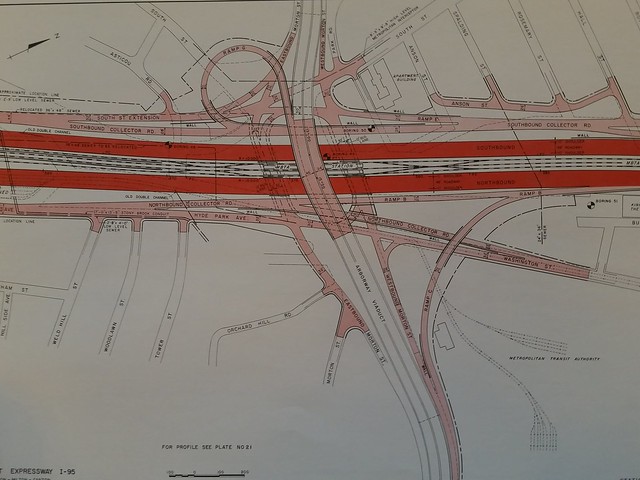Interesting. Aside from the NEC, I think the SWC park also was paid for by this - though I doubt that cost much money, but the bike path is technically transit-related.
Yeah, and also consider that these post-moratorium allocation decisions were Fred Salvucci's doing. He was arguably a bigger booster of the NEC High-Speed Program than the feds themselves were once the grand studies and recommendations actually got in front of the Congresscritters and transit-hostile Prez. admins who had to cut the checks.
What we know today as the Acela was basically a watered-down, 20-years-late version of what the 1970's HSR plan drew up. And there was a furious spending spree of Corridor state-of-repair modernization in the early-80's using money appropriated in the short span between the change in political climate that went from gung-ho to hostile in an instant and more or less put the freeze on any additional spending until the '99 electrification. When Massachusetts had the opportunity to trade in the SW Corridor for an upgraded rail corridor, Salvucci basically paid forward the entire inside-128 contribution to the HSR program. And that's how we end up in the place we are today with the Boston-end infrastructure being able to absorb every bit of Amtrak's superduper 2040 HSR plan just on the provisions left by:
-- Untapped NEC track capacity between Forest Hills and Readville, which exists for a reason.
-- SSX, which they were thinking of way the hell back then.
-- Fairmount Line as load-balancer for local vs. longer-distance traffic, which they were thinking of back then.
-- Inland Route, which did exist in shitty/barely-usable form back then but had much the same upgrade concepts as they're thinking of pursuing today.
-- Orange Line swallowing Needham Line, which they were thinking of way the hell back then.
-- N-S Link, which of course had its provisions baked into Salvucci's Big Dig.
Compared to NYC, we are on easy street when it comes to meeting the requirements of the 2040 plan (N-S Link not being a requirement for D.C.-Boston, of course). The infrastructure footprint for it all is pre-built or pre-reserved and whatever isn't built (SSX, Track 4, etc.) just needs to be populated onto the template they left for it with the SW Corridor, SS, and BBY modernizations. And that's because guys like Salvucci saw the
1970's HSR plan, which was a bit more ambitious than the 1999 build ended up being, as a Phase I jumping-off point for the 2040 plan (or whatever year they had that pegged as happening). It seems so obvious now, but he was really really out on a limb 40 years ago using the power of his office to put down the full down payment on the NEC using mostly state money and highway funds traded-in at a loss. Nobody would be able to get away with bullying those resources around today for something with an intended 2050 payoff-on-investment. It simply doesn't happen anymore with political instant-gratification the rule.

